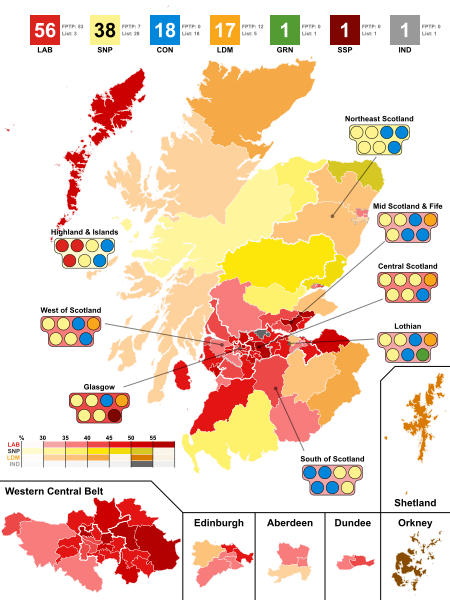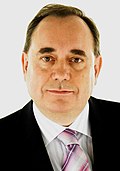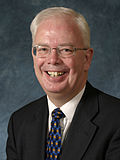
Back Eleccions al Parlament Escocès de 1999 Catalan Parlamentswahl in Schottland 1999 German Elecciones parlamentarias de Escocia de 1999 Spanish 1999ko Eskoziako Legebiltzarrerako hauteskundeak Basque Élections législatives écossaises de 1999 French Taghadh Albannach 1999 Scots/Gaelic Elezioni parlamentari in Scozia del 1999 Italian Eleições legislativas na Escócia em 1999 Portuguese Scots Pairlament election, 1999 SCO
| |||||||||||||||||||||||||||||||||||||||||||||||||||||||||||||||||||||||||||||||||||||
All 129 seats to the Scottish Parliament 65 seats were needed for a majority | |||||||||||||||||||||||||||||||||||||||||||||||||||||||||||||||||||||||||||||||||||||
|---|---|---|---|---|---|---|---|---|---|---|---|---|---|---|---|---|---|---|---|---|---|---|---|---|---|---|---|---|---|---|---|---|---|---|---|---|---|---|---|---|---|---|---|---|---|---|---|---|---|---|---|---|---|---|---|---|---|---|---|---|---|---|---|---|---|---|---|---|---|---|---|---|---|---|---|---|---|---|---|---|---|---|---|---|---|
| Turnout | Constituency - 58.4% Regional - 58.3% | ||||||||||||||||||||||||||||||||||||||||||||||||||||||||||||||||||||||||||||||||||||
| |||||||||||||||||||||||||||||||||||||||||||||||||||||||||||||||||||||||||||||||||||||
 The map shows the election results in single-member constituencies. The additional member MSPs in the 8 regions are shown around the map. | |||||||||||||||||||||||||||||||||||||||||||||||||||||||||||||||||||||||||||||||||||||
| |||||||||||||||||||||||||||||||||||||||||||||||||||||||||||||||||||||||||||||||||||||
The first election to the devolved Scottish Parliament, to fill 129 seats, took place on 6 May 1999. Following the election, the Labour Party and the Liberal Democrats formed the Scottish Executive, with Labour Member of the Scottish Parliament (MSP) Donald Dewar becoming First Minister.
The Scottish Parliament was created after a referendum on devolution took place on 11 September 1997 in which 74.3% of those who voted approved the idea. The Scotland Act (1998) was then passed by the UK Parliament which established the devolved Scottish Parliament and Scottish Executive. The parliament was elected using Mixed-member proportional representation, combining 73 (First-past-the-post) constituencies[note 1] and proportional representation with the 73 constituencies being grouped together to make eight regions each electing seven additional members to make a total of 129. This meant that it would be unlikely for any party to gain a majority of seats in the new parliament and either minority or coalition Scottish Executives would have to be formed.
The first general election to the Scottish Parliament overall produced few surprises with the Labour Party still enjoying high popularity following their landslide victory in the 1997 UK general election as widely expected was the largest party winning 56 seats, mostly in their traditional Central Belt heartlands, which was nine seats short of an overall majority. Labour formed a coalition government with the Liberal Democrats, who won 17 seats.[1]
The Scottish National Party (SNP) had done well in opinion polls running up to the election, gaining 40% in some approval ratings, but this level of support was not maintained. The SNP were the second largest party with 35 seats, which still represented their best performance since the October 1974 general election.[2] The Conservative Party, still recovering from their wipeout in the 1997 general election across Scotland, failed to win a single constituency seat but did manage to win 18 seats through the Additional Member System.
The Scottish Socialist Party (SSP) and the Greens picked up unexpected additional member seats.[3] Robin Harper became the first ever elected Green parliamentarian in the history of the United Kingdom.[4][5] Dennis Canavan, who had failed to become an approved Labour candidate, won the Falkirk West constituency as an independent candidate.[6]
Following the election the new parliament met in the General Assembly Hall of the Church of Scotland in Edinburgh for the first time on Wednesday 12 May 1999, although the actual devolution of powers from Westminster to the Scottish Parliament did not take place until midnight on Thursday 1 July 1999, almost two months later.[7][8]
For a full list of MSPs elected, see 1st Scottish Parliament. For lists of constituencies and regions, see Scottish Parliament constituencies and electoral regions.
Cite error: There are <ref group=note> tags on this page, but the references will not show without a {{reflist|group=note}} template (see the help page).
- ^ Seenan, Gerard; Macaskill, Ewen (14 May 1999). "Angry Lib Dems finally agree coalition deal". The Guardian. ISSN 0261-3077. Retrieved 6 March 2023.
- ^ "The long rise of the SNP". The Guardian. 6 May 1999. ISSN 0261-3077. Retrieved 6 March 2023.
- ^ Aiton, Andrew (6 May 2019). "It was 20 years ago today…". SPICe Spotlight. Retrieved 20 March 2023.
- ^ "A short history of Scottish Parliament elections, 1999-2011". The Scotsman. 3 May 2016. Archived from the original on 11 May 2021.
- ^ Mackie, Andy (18 March 2011). "Robin Harper looks back on twelve years in Parliament". The Edinburgh Reporter. Retrieved 6 March 2023.
- ^ Election Maps UK [@electionmapsuk] (7 May 2018). "Falkirk West elected Independent Dennis Canavan (grey constituency) whilst the Scottish Socialist Party got a seaton the top-ups (pink square on the second map)" (Tweet) – via Twitter.
- ^ "Scottish Parliament opening | The Queen's speech". BBC News. 1 July 1999. Retrieved 6 March 2023.
- ^ Auer, Christian (19 September 2019), "90. The Scottish Parliament Opening Ceremony, 1 July 1999", Scotland and the Scots, 1707-2007 : A Reader, Études anglophones, Strasbourg: Presses universitaires de Strasbourg, pp. 272–275, ISBN 979-10-344-0480-3, retrieved 6 March 2023





